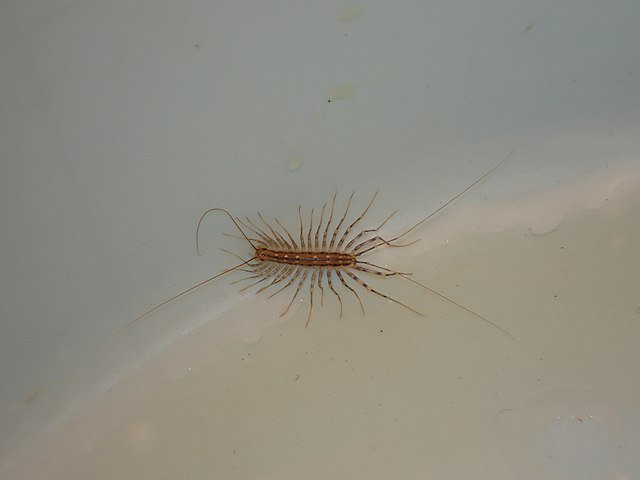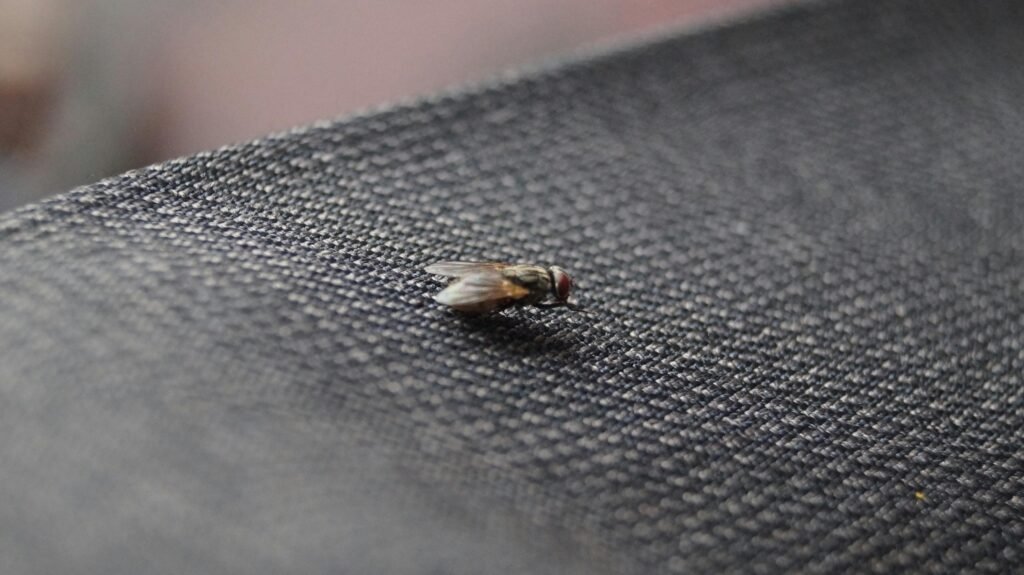Firebrats (Thermobia domestica): Identification, Biology, Risks, and Control
 Most people know silverfish, the tiny gray insects that sneak around bathrooms and kitchens. But fewer know their hotter cousin: the firebrat (Thermobia domestica). Firebrats thrive where most insects would collapse—boiler rooms, around ovens, behind radiators, or any place hot and damp. If silverfish are the “cool damp” insect, firebrats are the “heat addicts.”
Most people know silverfish, the tiny gray insects that sneak around bathrooms and kitchens. But fewer know their hotter cousin: the firebrat (Thermobia domestica). Firebrats thrive where most insects would collapse—boiler rooms, around ovens, behind radiators, or any place hot and damp. If silverfish are the “cool damp” insect, firebrats are the “heat addicts.”
Identification
Firebrats and silverfish belong to the same order (Zygentoma) and share the same body shape: flat, carrot-like, with long antennae and three bristles at the back. The differences:
Firebrats are mottled brown or gray, with speckled scales.
Silverfish are shiny silver-gray.
Firebrats prefer very hot areas, between 32–41 °C (90–105 °F).
Silverfish prefer cooler damp rooms, around 21–27 °C (70–80 °F).
Firebrats are usually found near boilers, ovens, radiators, hot water pipes.
Silverfish are more often in bathrooms, kitchens, and basements.
Lifecycle and Biology
Firebrats are ancient insects, among the most primitive still living today.
Females lay eggs in cracks and crevices near heat sources.
Eggs need high temperatures to hatch successfully.
Nymphs look like smaller versions of adults and go through dozens of molts.
Adults can live up to 3 years in good conditions.
Their long lifespan and continuous reproduction make infestations persistent.
Signs of Infestation
Seeing small, speckled insects run quickly across the floor at night in hot rooms.
Finding feeding damage on paper, cardboard, or fabrics.
Discovering small, dry shed skins left behind after molting.
Spotting them suddenly when lights are turned on near ovens or radiators.
Why They Love Heat
Firebrats are specially adapted to survive in extreme conditions:
They grow fastest at 36–38 °C.
Their eggs will not hatch if the environment is too cool.
Humidity around hot water pipes or ovens creates the perfect balance for survival.
This is why they are common in bakeries, boiler rooms, laundries, and industrial kitchens.
Risks and Problems
Firebrats do not bite people and do not spread diseases. But they can still be a problem:
They damage books, wallpaper, and clothing made from natural fibers.
They can contaminate stored food such as cereals, flour, or pet food.
In businesses, even a few firebrats create a bad impression.
They can survive for years if conditions remain hot and humid.
Control Methods
Sanitation
Store food in airtight containers.
Avoid keeping cardboard boxes near hot appliances.
Vacuum regularly in boiler rooms, kitchens, and hot storage areas.
Environmental Adjustments
Improve ventilation around ovens and radiators.
Repair leaks in hot water pipes.
Use dehumidifiers in laundry rooms or kitchens.
DIY Control
Place sticky traps to monitor activity.
Apply diatomaceous earth or silica gel dust into cracks and crevices.
Reduce humidity and clutter to make the environment less suitable.
Professional Treatment
In heavy infestations, especially in restaurants, bakeries, and laundries, professional pest control is necessary.
Professionals use residual insecticides, insect growth regulators (IGRs), and integrated pest management to keep populations under control long-term.
FAQ
Q: Do firebrats fly?
A: No, they are wingless insects.
Q: Do they live in normal rooms?
A: Rarely. They need much higher temperatures than most homes provide.
Q: Are firebrats dangerous for humans?
A: They don’t bite or transmit diseases, but they damage books, fabrics, and stored foods.
Q: How do they enter homes?
A: Through cracks, pipes, or even shared heating systems in apartment buildings.
Q: What’s the fastest way to kill them?
A: Lower humidity, reduce clutter, and apply insecticidal dust in hiding spots.
Final Thoughts
Firebrats are the heat-loving cousins of silverfish. They are not dangerous to health but can damage property and stored foods. Their presence is a clear sign of excessive heat and humidity indoors. Acting early with sanitation, exclusion, and monitoring is the best way to prevent them from becoming long-term residents.
Learn more about other Urban & Indoor Pests that affect our houses and buidings.
Disclaimer
This article is for informational purposes only. Pest control laws and approved chemicals vary by country. For best results and legal safety, we strongly recommend contacting a licensed pest control professional in your local area. Always make sure that the pest control technician is properly certified or licensed, depending on your country’s regulations. It’s important to confirm that they only use approved products and apply them exactly as instructed on the product label. In most places in Europe, UK, or USA, following label directions is not just best practice—it’s the law.
Author
Nasos Iliopoulos
MSc Agronomist & Certified Pest Control Expert
Scientific Director, Advance Services (Athens, Greece)
Licensed Pest Control Business – Ministry of Rural Development & Food (GR)
References
University of Minnesota Extension – Silverfish and Firebrats
Penn State Extension – Silverfish and Firebrats


